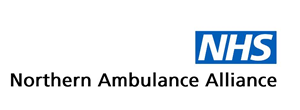Avoidable Conveyance
Lead CE: Helen Ray (NEAS), Lead Executive: Mick Forrest / Mark Newton (NWAS), Clinical Lead: TBC
Aims and Objectives
Safe Reduction in Avoidable Conveyance for Falls, Mental Health and Care Homes by optimising the response.
Benefits
- Building on opportunities to maximise Hear & Treat and See & Treat where safe to do so by developing pathways with other organisations and systems. Increasing access to ED alternatives where patients are not suitable for community care pathways e.g. developing pathways into Ambulatory Emergency Care (also known as Same Day Emergency Care) for use by clinicians.
- Support in the development of differentiated responses that could be provided to nursing and care home residents to ensure pathways across the whole patient journey are accessed.
- Supporting improvements in the clinical skills of staff to optimise the response to the patient e.g. clinical skill improvements, telephone triage.
Key Outputs
- Alignment of trust strategies to identify and recognise elements of good practice that can be shared across the NAA to support a reduction in safe conveyance and prescription of a holistic care model.
- Alignment of best practice guidelines. This will be supported and adopt the national approach, underpinning principles and guidance.
- Supporting shared learning from the four trusts at defined intervals to support sharing examples of innovation, good practice and reflective examples of improvement methodology
- Creating a shared workspace for NAA trusts to share the learning, policies and evaluations for Care Homes, Mental Health and Falls and Frailty.
For examples of the good practice and work that is being shared across the NAA see link below:
September 2020 Avoidable Conveyance Shared Practice
Further Information
For access to the sharing of practice via the Future NHS Collaboration Platform and for further information contact: Steven Scholes, Steven.Scholes@nwas.nhs.uk

